34 Valvular Disease
Rheumatic
_..
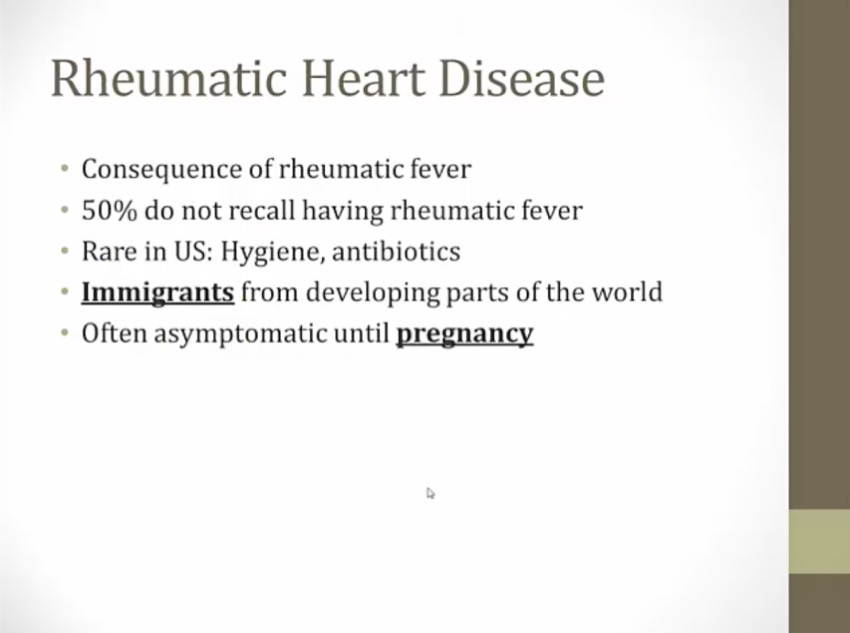
children with strep infection
blood volume goes up in pregnancy, symptomatic
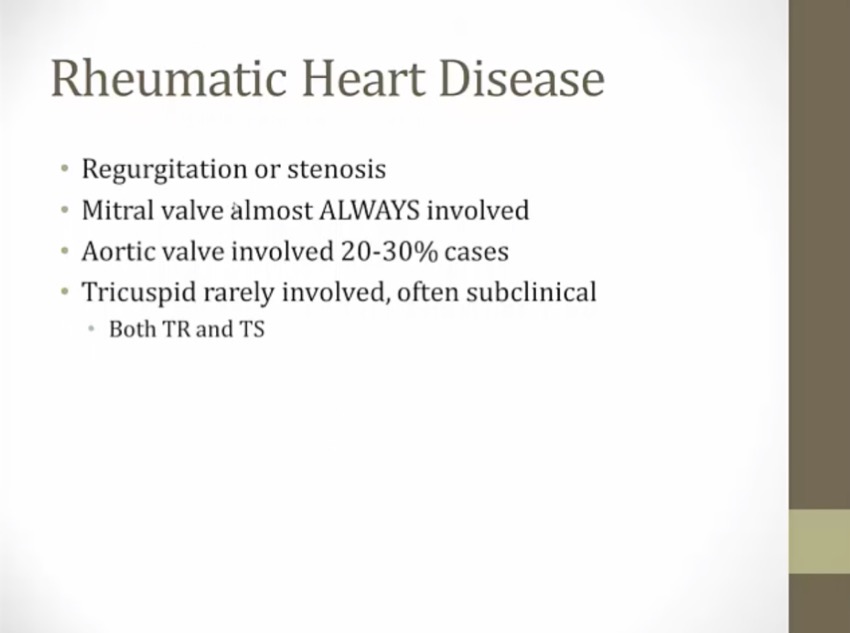
Aortic Stenosis
_..



exception to aging
stenosis in 50s: bicuspid valve
The three major causes of valvular aortic stenosis are a congenitally abnormal valve with calcification (e.g. bicuspid valve), a calcified normal valve, or rheumatic heart disease. Although rheumatic heart disease is the most common cause worldwide, calcific aortic valve disease (in either a bicuspid or tricuspid valve) is more common in the United States.


2 leaflets fused together, not opening
avoid meds that decreases cardiac output (beta blockers, diuretics)
surgery with anesthesia places pts more at risks by inhibiting sympathetic response
Mitral Stenosis
_..
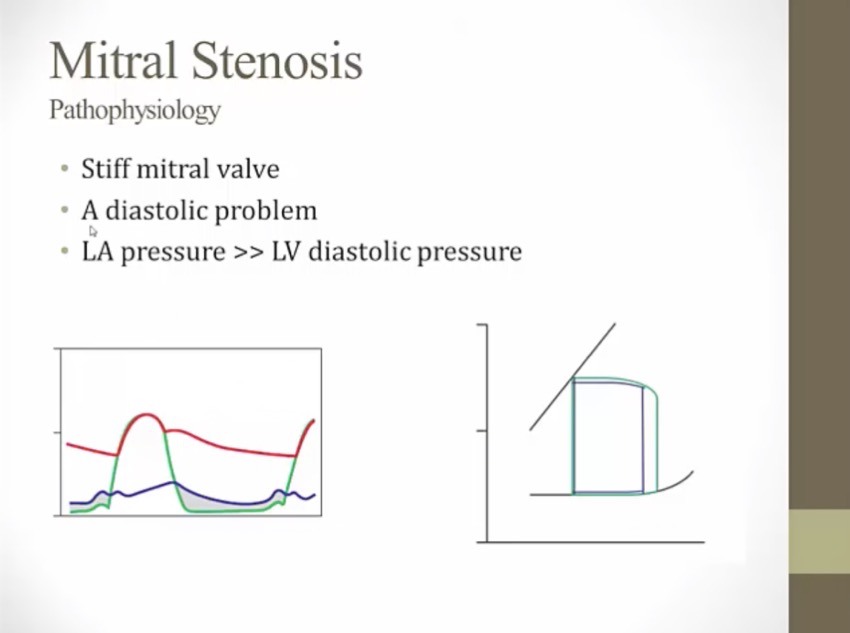
ventricle normal but just less blood
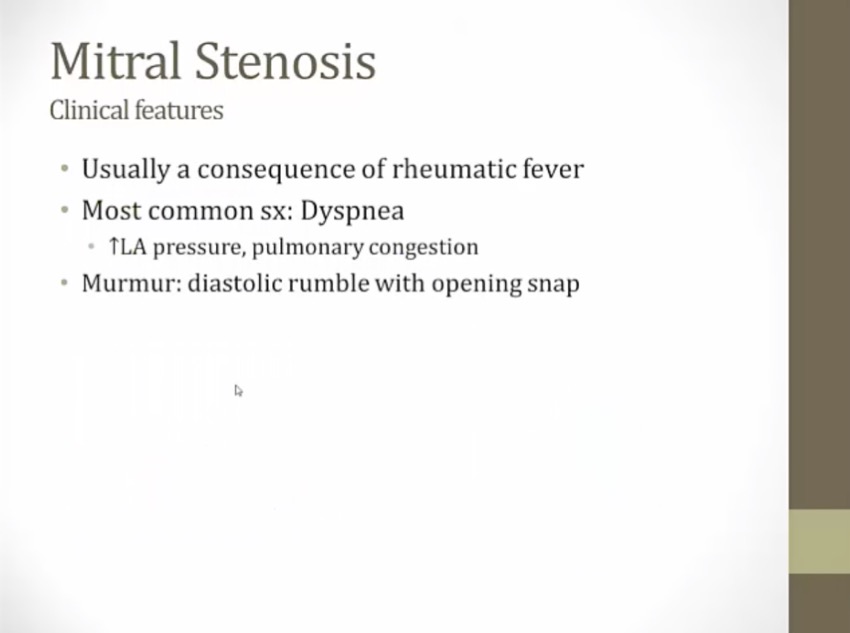
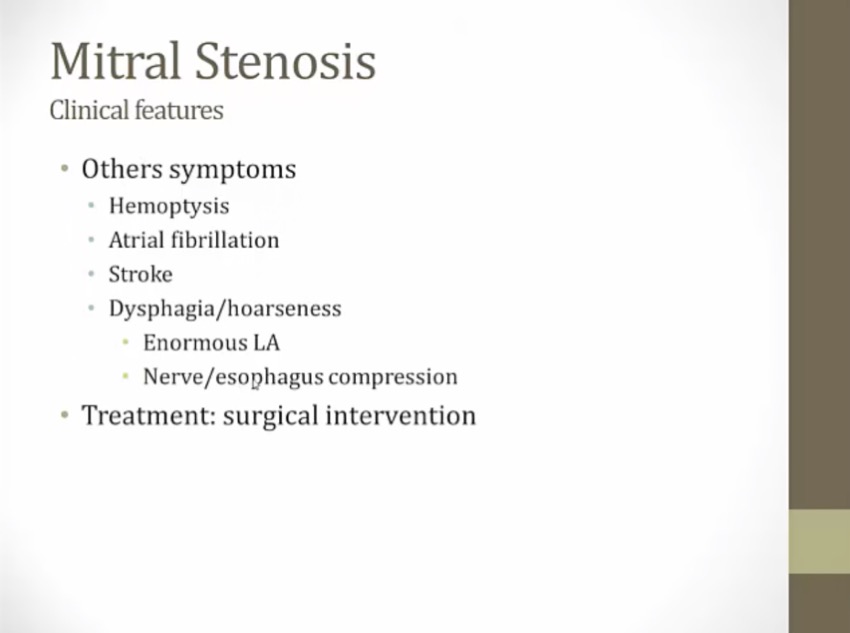
hemoptysis: very high pressure in lung
afib: dilated atrium due to volume overload, complication = stroke
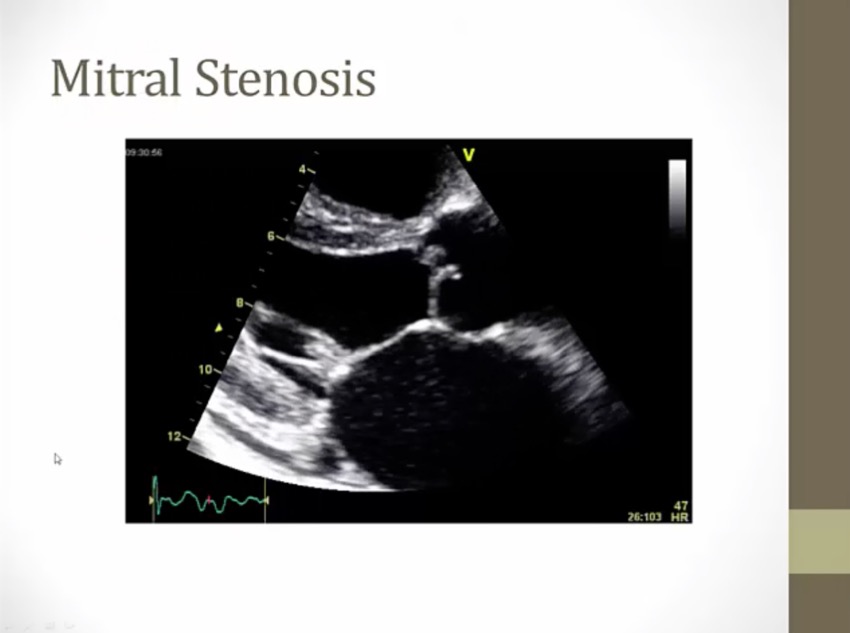
mitral valve in middle can't open
Aortic Regurge
_..

increased preload/stroke volume: ventricle has to pump blood twice
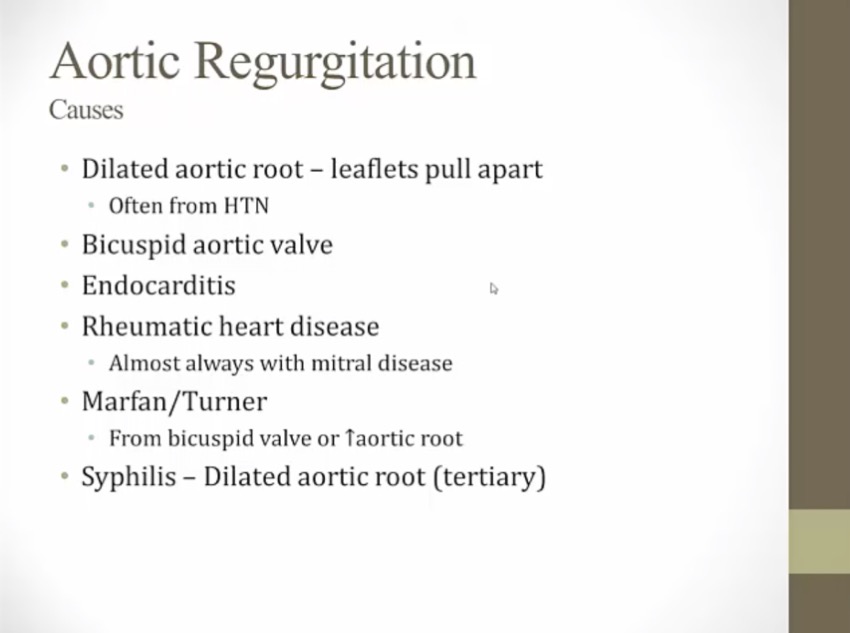
HTN: thoracic aortic aneurysm
endocarditis: damaged heart valve
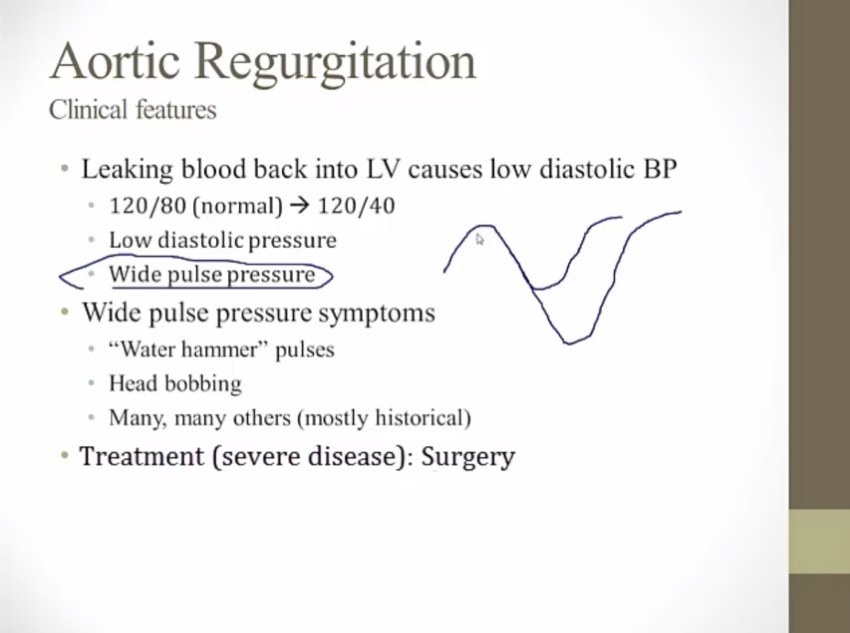
also occurs with PDA, AV fistula. Anything with leakage of blood out of aorta
water hammer pulses: strong bounding pulses
head bobbing: get dizzy when bp low
Pulsus bisferiens, also known as a biphasic pulse, refers to two strong systolic pulses with a mid-systolic dip, in other words, two pulses during systole. It can be seen in aortic regurgitation with or without aortic stenosis and hypertrophic cardiomyopathy.

Mitral Regurge
_..

heart has to pump blood twice

papillary muscle damage
functional MR: leaflets too far apart

down syndrome: EDC defect. Affect mitral leaflet
cleft mitral valve: one of leaflets has a piece missing
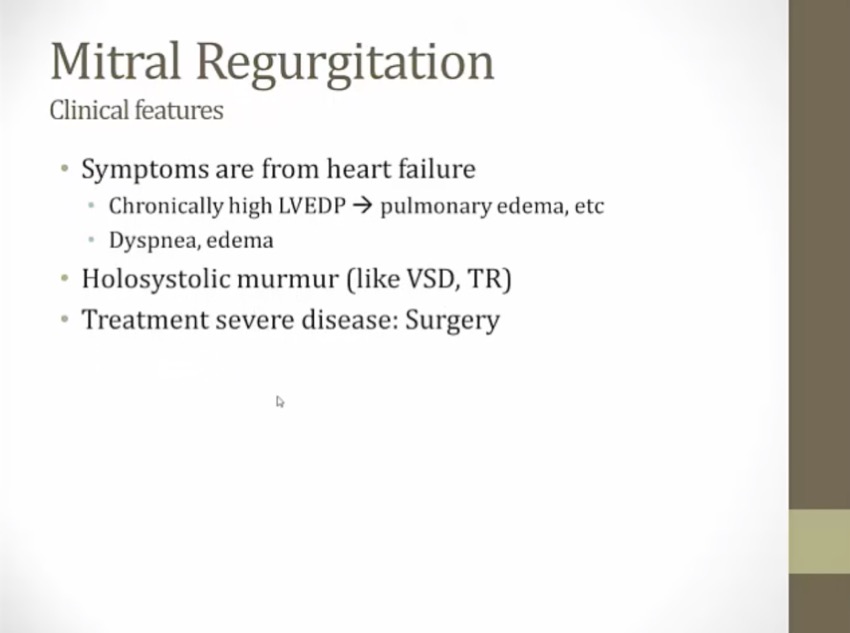
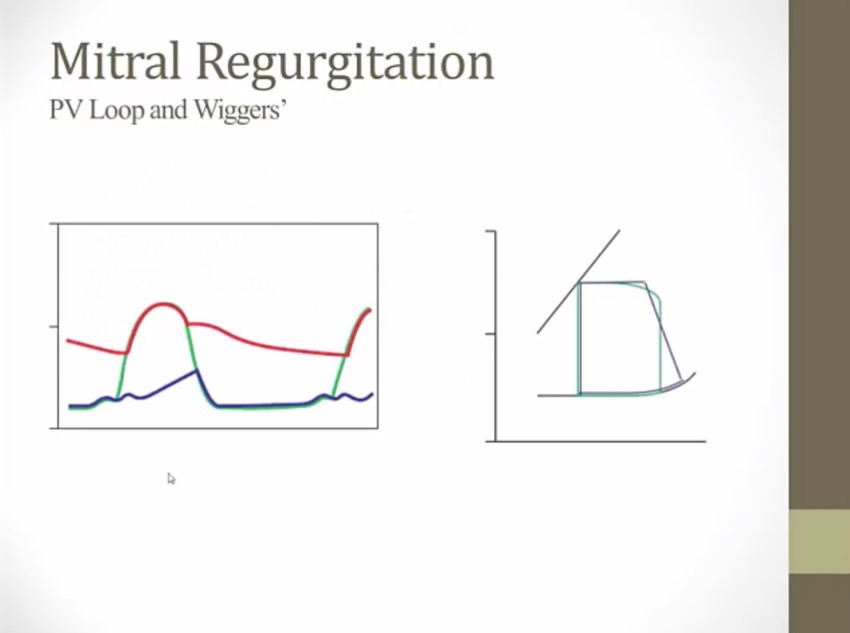

choose medication that lowers afterload, increase forward flow
Tricuspid and Pulmonic
_..

right sided very rare


Valve surgery

not tested
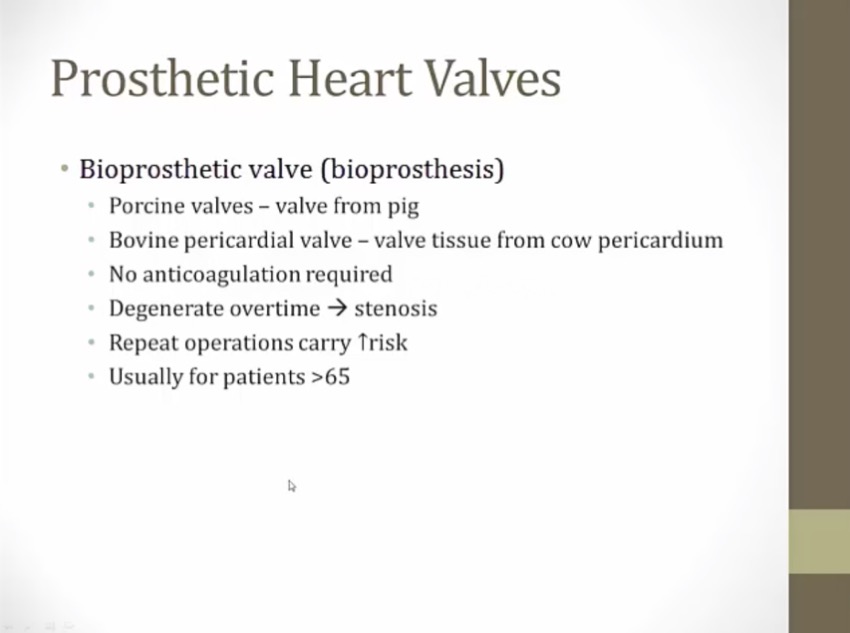
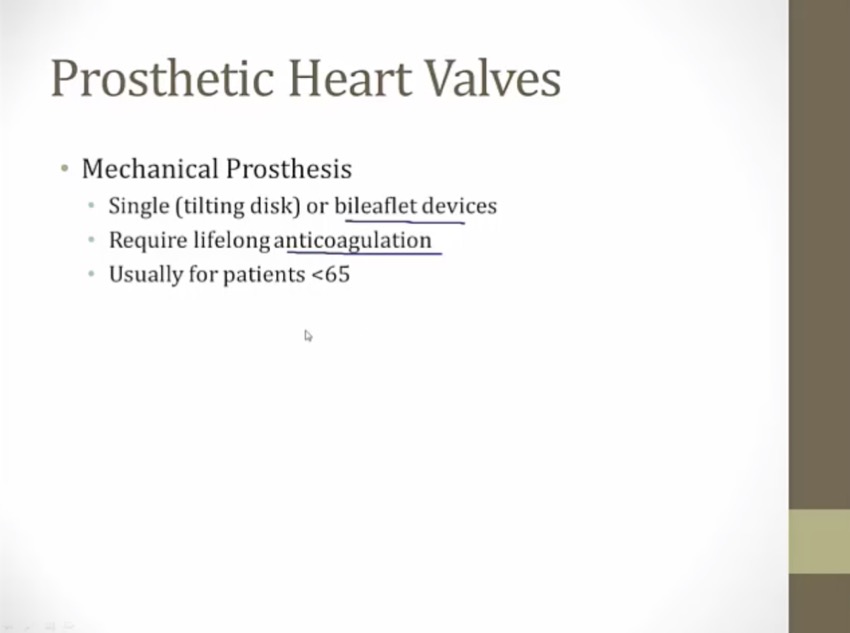
Last updated
Was this helpful?